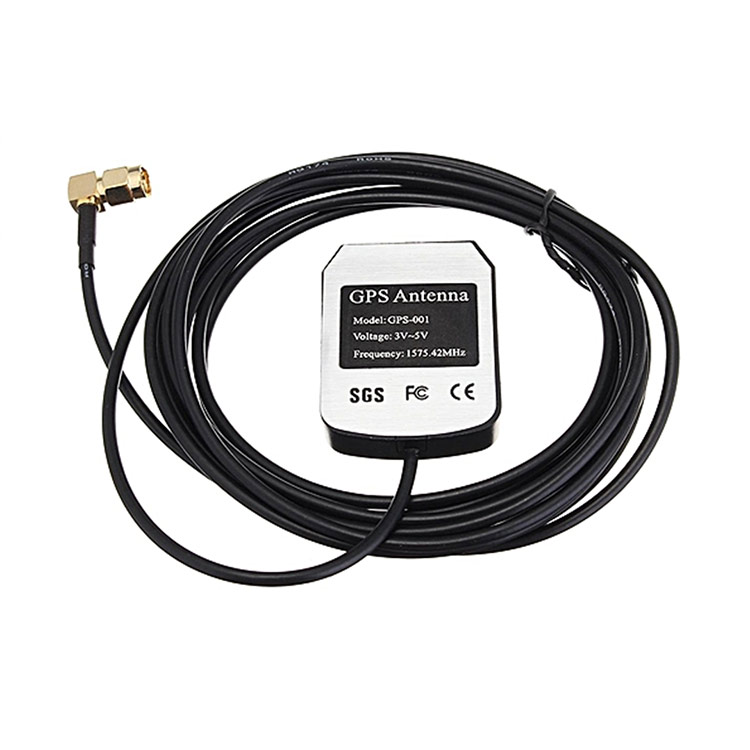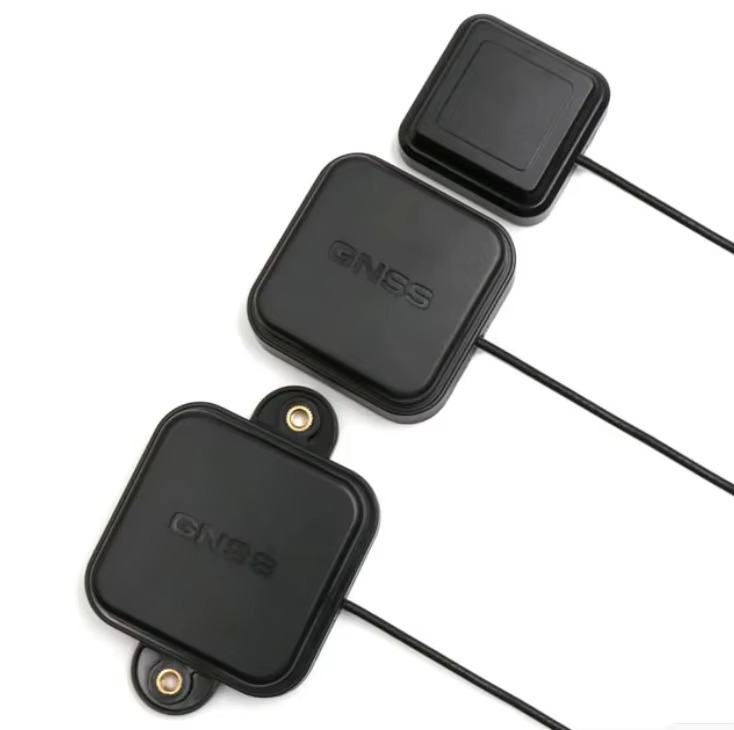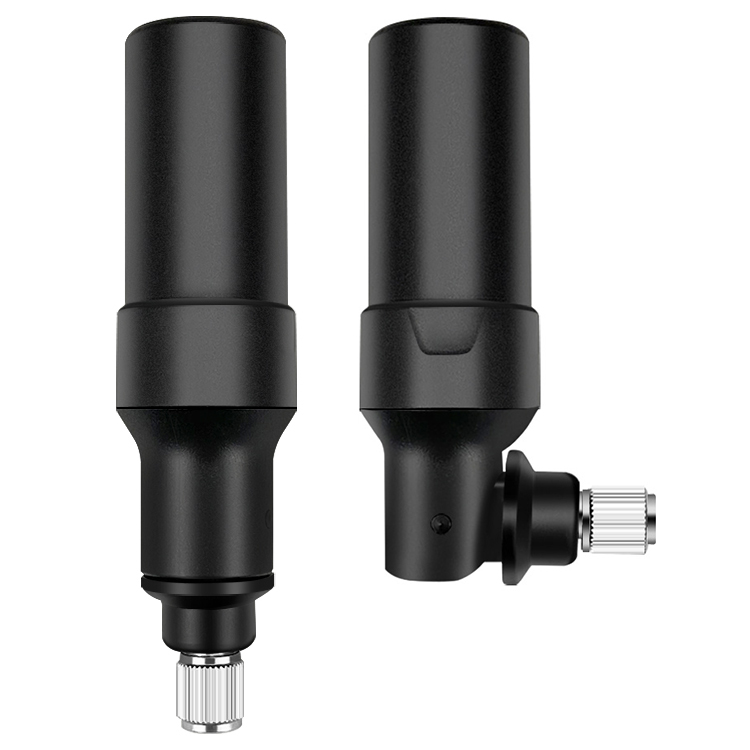5.1 Applications
5.1.1 Land and Hydrographic Surveying
In land surveying, GPS L1 L2 compatible antennas are essential for achieving high - precision measurements. Surveyors use these antennas in combination with RTK or precise point positioning (PPP) techniques to accurately map the terrain, measure property boundaries, and establish control points. In hydrographic surveying, which involves mapping the underwater topography of rivers, lakes, and oceans, the use of dual - band antennas is also crucial. The ability to receive signals from multiple bands and constellations helps in obtaining accurate position information even in challenging environments such as near - shore areas where there may be interference from land - based structures.
5.1.2 Aviation and Maritime Navigation
In aviation, GPS L1 L2 compatible antennas are used in aircraft navigation systems. The enhanced accuracy and reliability provided by dual - band reception are critical for safe takeoff, landing, and in - flight navigation. Pilots rely on accurate GPS information to navigate through different weather conditions and crowded airspace. In maritime navigation, ships use these antennas for precise positioning, which is important for safe navigation, especially in congested ports and waterways. The multi - constellation capability of these antennas also provides an added layer of redundancy in case of satellite failures or signal blockages.
5.1.3 Precision Agriculture
Precision agriculture is an emerging field that uses GPS technology to optimize farming practices. GPS L1 L2 compatible antennas are used in agricultural machinery such as tractors, combines, and sprayers. The high - precision positioning information allows farmers to accurately apply fertilizers, pesticides, and seeds, reducing waste and increasing crop yields. For example, variable - rate application systems can adjust the amount of inputs based on the precise location within the field, taking into account factors such as soil fertility and crop growth.
5.1.4 Autonomous Vehicles
Autonomous vehicles, including self - driving cars and drones, rely heavily on accurate GPS positioning. GPS L1 L2 compatible antennas play a crucial role in providing the high - accuracy location information needed for these vehicles to navigate safely. In self - driving cars, the use of dual - band antennas helps in precisely determining the vehicle's position on the road, which is essential for tasks such as lane - keeping, intersection navigation, and collision avoidance. Drones also use these antennas for accurate flight path control, especially in applications such as aerial mapping and delivery services.
5.2 Future Trends
5.2.1 Integration with 5G and IoT
As the 5G network continues to expand and the IoT ecosystem grows, there will be an increasing need for seamless integration of GPS L1 L2 compatible antennas with these technologies. 5G networks can provide high - speed data communication, which can be used to transmit real - time GPS location data for various applications. In the IoT, a large number of devices will require accurate location information, and GPS L1 L2 antennas can be integrated into these devices to enable location - based services. For example, smart city applications such as traffic monitoring, waste management, and environmental sensing can benefit from the precise location data provided by these antennas.
5.2.2 Development of Smaller and More Efficient Antennas
There will be a continued trend towards the development of smaller and more efficient GPS L1 L2 compatible antennas. With the miniaturization of electronic devices, antennas need to be even more compact while still maintaining high performance. New materials and manufacturing techniques are being explored to achieve this goal. For example, the use of metamaterials, which are artificial materials engineered to have unique electromagnetic properties, may lead to the development of smaller and more efficient antennas. In addition, improvements in antenna design algorithms and simulation tools will allow for more optimized antenna designs.
5.2.3 Enhanced Anti - interference and Security Features
As the threat of interference and jamming to GPS signals increases, future GPS L1 L2 compatible antennas will need to have enhanced anti - interference and security features. Research is being conducted to develop new techniques for detecting and mitigating interference, such as advanced filtering algorithms and adaptive antenna arrays. In terms of security, there will be a greater focus on protecting GPS signals from spoofing attacks, where an attacker transmits false GPS signals to deceive a receiver. This may involve the use of cryptographic techniques and authentication mechanisms to ensure the integrity of the GPS signals.
6. Conclusion
The GPS L1 L2 compatible antenna stands as a pivotal innovation in the field of satellite navigation, bridging the gap between basic civilian positioning needs and high-precision industrial requirements. Throughout this comprehensive analysis, we have explored its core characteristics, design intricacies, operational mechanisms, practical advantages, existing challenges, real-world applications, and future directions—each aspect highlighting its irreplaceable role in modern positioning systems.
From an operational perspective, the dual-band reception capability of GPS L1 L2 compatible antennas addresses one of the most critical pain points in GPS technology: signal error caused by ionospheric delay. By simultaneously capturing signals from the L1 (1575.42 MHz) civilian band and L2 (1227.6 MHz) high-precision band, these antennas enable receivers to calculate and compensate for frequency-dependent ionospheric interference. This not only elevates positioning accuracy from meter-level (with single L1 band) to centimeter-level (in RTK/PPP scenarios) but also enhances signal reliability in challenging environments—such as urban canyons or remote rural areas—where single-band antennas often struggle with signal blockage or multipath interference.
In terms of design and construction, the versatility of antenna types (patch, dipole, helical) ensures adaptability across diverse application scenarios. Patch antennas, with their compact, low-profile stacked-patch structure, are ideal for space-constrained devices like smartphones and drones; dipole antennas, leveraging asymmetric feeding networks for wide bandwidth and stable axial ratio, excel in maritime and aviation navigation where multipath rejection is critical; helical antennas, with their omnidirectional radiation patterns and robust circular polarization, suit surveying equipment operating in open terrain. The careful selection of materials—from high-conductivity copper and corrosion-resistant gold plating to temperature-stable ceramics and low-loss radome materials—further underscores the engineering precision required to balance performance, durability, and form factor.
However, the widespread adoption of GPS L1 L2 compatible antennas is not without obstacles. Interference remains a persistent challenge: natural disruptions (e.g., solar flares) and man-made jamming (e.g., industrial equipment, intentional signal spoofing) can degrade signal integrity, while designing in-band filters that avoid attenuating desired GPS signals requires advanced signal processing expertise. Cost is another barrier: dual-band designs demand additional components (e.g., multi-feed mechanisms, complex couplers) and high-grade materials, making them 30–50% more expensive than single-band antennas—a significant constraint for cost-sensitive consumer devices like entry-level smartphones. Additionally, integration complexity, such as optimizing antenna placement to avoid electromagnetic interference from device components (e.g., 5G modems, batteries), adds layers of engineering difficulty.
Despite these challenges, the applications of GPS L1 L2 compatible antennas continue to expand across industries. In land surveying, they enable construction firms to map terrain with centimeter accuracy, reducing errors in infrastructure projects like highway alignment or building foundation layout. In precision agriculture, they power variable-rate application systems that apply fertilizers and pesticides only where needed, cutting input costs by 15–20% while boosting crop yields. In aviation, they support NextGen Air Transportation Systems, allowing planes to maintain tighter flight paths and reduce fuel consumption by minimizing detours. Even in emerging fields like autonomous drones, these antennas provide the high-reliability positioning needed for tasks such as package delivery in urban areas or wildlife monitoring in remote forests.
Looking to the future, three key trends will shape the evolution of GPS L1 L2 compatible antennas. First, integration with 5G and IoT will create synergies: 5G’s low latency (1–10 ms) will enable real-time transmission of high-precision location data, while IoT devices—from smart city sensors to asset trackers—will rely on dual-band antennas to deliver accurate location-based services. For example, smart traffic lights equipped with these antennas can adjust signal timing based on the exact position of vehicles, reducing congestion by 25% in busy intersections. Second, miniaturization and efficiency will advance through new materials and designs: metamaterials, with their ability to manipulate electromagnetic waves, could reduce antenna size by 40% while maintaining performance, making them suitable for wearables like fitness trackers or medical devices (e.g., GPS-enabled pacemakers for patient monitoring). Third, anti-interference and security will become paramount: adaptive antenna arrays that dynamically focus on satellite signals (while blocking jammers) and cryptographic authentication of GPS signals (to prevent spoofing) will be integrated into next-generation designs, critical for safety-critical applications like autonomous vehicles or military operations.
In summary, GPS L1 L2 compatible antennas are not just a technical advancement but a enabler of a more connected, precise, and efficient world. As technology evolves to overcome current challenges—lowering costs, improving interference resistance, and shrinking form factors—their adoption will accelerate, unlocking new possibilities in navigation, agriculture, aviation, and beyond. For engineers, manufacturers, and end-users alike, understanding the capabilities and limitations of these antennas is essential to leveraging their full potential in an increasingly location-dependent society.
Supplementary: Practical Application Cases and Technical Comparison
To further contextualize the value of GPS L1 L2 compatible antennas, let’s examine two real-world case studies and a technical performance comparison with single-band antennas.
Case Study 1: High-Speed Rail Construction Surveying
A Chinese construction firm tasked with building a 350 km/h high-speed rail line between two major cities required terrain mapping with sub-centimeter accuracy to ensure track alignment (critical for passenger safety and ride comfort). The firm initially used single-band L1 antennas but encountered errors of 1–2 meters due to ionospheric interference, leading to rework and delays. After switching to GPS L1 L2 compatible patch antennas (equipped with ceramic substrates for temperature stability), the team achieved centimeter-level accuracy (±2 cm) using RTK technology. This reduced rework costs by 30% and shortened the surveying phase by 2 weeks, demonstrating the antenna’s impact on large-scale infrastructure projects.
Case Study 2: Precision Drone Crop Spraying
A U.S. agricultural drone company deployed 50 drones equipped with GPS L1 L2 compatible helical antennas for crop spraying on a 1,000-acre corn farm. The dual-band antennas enabled the drones to maintain a flight path accuracy of ±5 cm, even in areas with tree cover (which causes multipath interference). Compared to drones using single-band L1 antennas (which had ±30 cm accuracy), the dual-band-equipped drones reduced pesticide waste by 18% and covered 20% more acreage per day. The farm reported a 12% increase in corn yield due to more precise chemical application, highlighting the antenna’s role in sustainable agriculture.
| Performance Metric | GPS L1 L2 Compatible Antenna | Single-Band L1 Antenna |
|---|
| Positioning Accuracy (RTK Mode) | ±1–5 cm | ±1–2 m |
| Ionospheric Delay Compensation | Yes (via dual-band difference) | No (relies on empirical models) |
| Multipath Rejection | High (RHCP + wide bandwidth) | Low (limited polarization control) |
| Signal Availability (Urban Canyons) | 85–95% (dual-band redundancy) | 60–75% (single-band vulnerability) |
| Power Consumption | 15–20 mW | 8–12 mW |
| Cost (Consumer Grade) | $15–$30 | $5–$10 |
| Cost (Industrial Grade) | $100–$500 | $30–$150 |
This comparison underscores that while single-band L1 antennas have advantages in cost and power efficiency, GPS L1 L2 compatible antennas outperform them in accuracy, reliability, and environmental resilience—making them the preferred choice for applications where precision and dependability are non-negotiable.




































































 Language
Language
 En
En Cn
Cn Korean
Korean

 Home >
Home > 







 18665803017 (Macro)
18665803017 (Macro)













